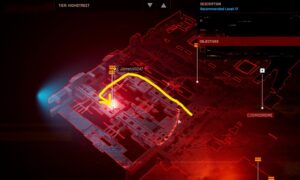It seems that it’s always been a struggle to keep your Mac safe. While there are several security options that can help you keep safe on your Mac, many users don’t know exactly what they are. Here are some tips to help you keep your Mac safe, especially if you have a Macbook.
If you work with a Mac, you know how important it is to secure your machine while you’re away from it. But what if you lose your Mac? Not to worry—it’s easy to secure your Mac. Here are some easy tips to do so.
Macs are becoming a common source of attacks on a variety of networks. The size of the Mac malware threat is growing, and there is the common misconception that Macs are secure from malware attacks.
The 2024 MacBook Pros, according to Bloomberg’s Mark Gurman, will have significant architectural modifications, including the return of MagSafe and improved display panels. This is significant news, given that the MacBook Pro line hasn’t seen any significant upgrades since the ill-fated Touch Bar was introduced a few years ago.
There are a few things you should know about Macs and their general security if you plan on jumping on the Apple train with the new Mac models coming later this year. Cybercriminals can and do target Mac users, contrary to common opinion. Macs are just as vulnerable to malware and viruses as Windows devices, and cybercriminals can and do target Mac users.
This shouldn’t deter you from purchasing a MacBook, but it should motivate you to keep your Mac safe after you have it. So, how do you go about doing that? Let’s take a look at five ways to transform your MacBook into a security supercomputer today.
5 Ways to Keep Your Mac Safe
1. Turn on FileVault.

Bitdefender is available for Windows, and FileVault is available for Mac. But what exactly are they? Simply explained, Bitdefender and FileVault are encryption features integrated into their respective operating systems that protect your device’s data from unauthorized users. Because this is a Mac-centric post, we’ll concentrate on FileVault.
Apple’s modern version of FileVault, FileVault 2, requires OS X Lion or later, so any MacBook from 2011 onwards will have access to FileVault. Enabling FileVault is simple; all you need to do is find FileVault in your Mac’s “Security & Privacy” options, then enable FileVault.
FileVault will ask you for a password that you’ll need to validate your identity and access your data, so make it distinctive and difficult to guess.
2. Set up a VPN
How frequently do you intend to take your MacBook to a neighborhood diner or café? Why wouldn’t they? It’s something that a lot of people do. These public spaces include free Wi-Fi, food, and beverages—everything you need to work while remaining comfortable. However, the free internet they provide—often referred to as “public networks”—is one of the least secure networks available.
Cybercriminals enjoy scouring public networks for data, and the last thing you want is to be a victim of identity theft. You’ll need a virtual private network to keep safe on public networks.
You can secure your Mac’s data and browse it safely on any public network with the help of a good VPN for Mac. It’s a win-win situation!
3. Select “Find My Mac” from the menu bar.

Losing your laptop is the worst feeling in the world. Whether you accidentally left your Mac unattended for a few minutes and returned to discover it gone, or you misplaced it, there is a simple option to locate your Mac called “Find My Mac.”
When you enable Find My Mac, Apple will utilize your Mac’s GPS to pinpoint its general location so you may go and try to rescue it. You may, however, be unable to retrieve it at some point. In these situations, Find My Mac allows users to completely delete their Macs. It’s a last-resort solution, but it could come in handy if your Mac is stolen.
4. Make use of a password manager.
Passwords are difficult to remember. You want to build secure passwords that are tough to crack, but you also want your passwords to be memorable—these two goals frequently collide. This is why a password manager is essential!
Password managers help you create secure passwords. These passwords are complete nonsense, impossible to remember. The password will be stored in an encrypted “locker” by the manager once it has been created. This implies that 1) your passwords are secure and may be accessed at any time, and 2) strong passwords are simple to create.
5. Make Your Apple Account Two-Factor Authenticated

There’s no telling what can happen if a hacker gains access to your Apple account. They have the ability to steal your payment details from your account. They may be able to take complete control of your account! You should setup two-factor authentication for any account that is both critical and vulnerable (2FA).
Users must confirm their identification using a security passcode supplied to them via a secure channel (email, text, push notifications, etc.). It’s straightforward, easy, and highly recommended to set up 2FA.
Conclusion
It won’t be long before the next generation of MacBooks enters the market. To get ready for the new MacBook, start thinking about how you’ll improve the security of your future MacBook Pro.
There are many reasons why you might want to secure your Mac—most likely they’re not related to privacy or anti-distribution measures. For example, when you run a destructive program on your machine you may want to ensure that the harm it does is limited. Or, when you share your Mac with others you may want to make sure they don’t delete files that you’ve worked hard to maintain.. Read more about how do i run a security check on my mac and let us know what you think.
{“@context”:”https://schema.org”,”@type”:”FAQPage”,”mainEntity”:[{“@type”:”Question”,”name”:”How do I protect my Mac privacy?”,”acceptedAnswer”:{“@type”:”Answer”,”text”:”
The best way to protect your privacy is to use a VPN.”}},{“@type”:”Question”,”name”:”How do I protect my MacBook?”,”acceptedAnswer”:{“@type”:”Answer”,”text”:”
You can use a screen protector, and you should also avoid placing your MacBook on its back or in a position where it is not being used.”}},{“@type”:”Question”,”name”:”Can a Mac be hacked remotely?”,”acceptedAnswer”:{“@type”:”Answer”,”text”:”
Yes, a Mac can be hacked remotely.”}}]}
Frequently Asked Questions
How do I protect my Mac privacy?
The best way to protect your privacy is to use a VPN.
How do I protect my MacBook?
You can use a screen protector, and you should also avoid placing your MacBook on its back or in a position where it is not being used.
Can a Mac be hacked remotely?
Yes, a Mac can be hacked remotely.
Related Tags
This article broadly covered the following related topics:
- mac security
- mac security settings
- mac security check
- mac security tips
- how to secure your mac













